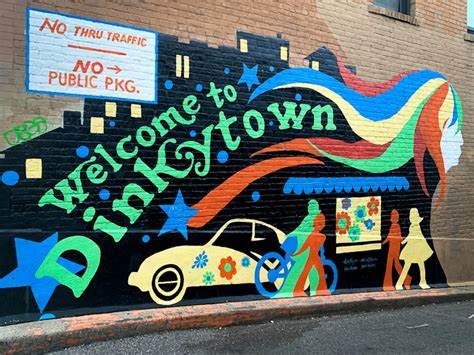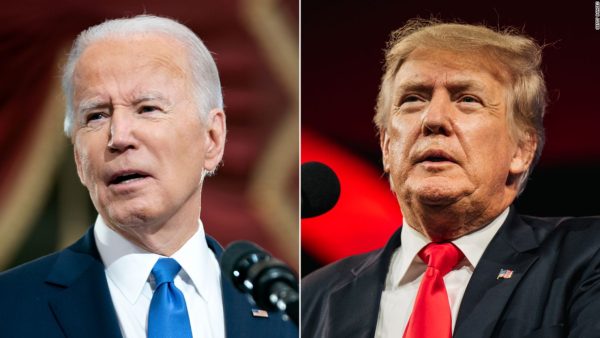The F Word: A Feminism Conference in Morris
April 25, 2017
An issue entrenched within feminism is the right to choose to have an abortion. At the F Word Conference, Morris Student Brooke Fetterer gave a presentation titled “Why Abortion is Not a Feminist Issue” that touched on the subject on separating abortion from feminism and creating room for a dialogue to include pro-lifefeminists. Fetterer’s premise: Putting the needs of the mother before the child is not true feminism. Fetterer argued that true feminism is about creating equity instead of superiority, and because women are the only ones who can have children, the standards for feminism need to be reexamined.
Abortion denies others of a family member and the rest of society a participant. By the way, over half of all children aborted are female and future women. because of their inconvenience in conception, these future women will not be able to lead, make discoveries, or love others. Fetterer pointed out the trauma that women who have experienced abortions faced from their procedures. She claims that true feminism would not advocate for something that kills a woman on one front (the child) and potentially kill the woman from another (the mother). In a society where there is increased concern regarding mental health, it is crucial to prevent all wrongful death by treating abortion as an issue separate from feminism.
The issue drew some criticism from the crowd after the presentation. One attendee spoke about how her family had fostered children regularly and how the foster care and adoption systems are broken. The attendee mentioned how the current situation of child protective services needs to be recognized in tandem with the issue of abortion. She mentioned how a fair numberof foster children are never adopted and that many of them come from homes with rampant substance abuse. Fetterer responded by pointing out that part of her personal construction of feminism involves the dignity of all human beings and that even though these children may have a harder upbringing, no one has a monopoly onan enjoyable life; everyone is legitimate.
Morris student Shelby Flanagan gave a workshop based onthe mental health disparities within the queer community and how they are addressed by healthcare professionals. Flanagan stated that there are certain stressors that are associated with being a minority and that these stressors are prevalent in the queer community. Many people who do not conform to societal expectations in sexual or gender identities have been cast outby their friends and families, often leading to homelessness. This phenomenon is especially tough for teens and young adults who more dependent on their familial network than older people. Flanagan also pointed out that the diagnosis of gender dysphoria can be a large stressor on the patient. This is reflected in the high suicide rate for those diagnosed with gender dysphoria.
Adrienne Conley a staff member of Morris’s Equity, Diversity, and Intercultural Programs gave the final presentation of the day. Conley gave a presentation on the presence of safe spaces on university campuses. Conley, a doctoral student in higher educational leadership at Colorado State University, specializes in queer inclusivity. Although Conley is not a content expert aboutfree speech legality or academic issues, she decided to conduct a qualitative research experiment on the Morris campus.
Conley sat in the student union and asked questions to queer students about safe spaces and freedom of speech. Queer students also believed in the same definition of freedom of speech as the non-queer students in the workshop, however, the observed queer students did not view public spaces as safe spaces. This led to a dialogue of what a safe space is. Is it a place where only certain thoughts are welcome? Or, is it somewhere that people can come together without fear of retaliation and share what they really think? This was discussed after showing a slide from the fall semester that had a chalkboard with the words “Build that Wall, Trump 2016” on it.
The presentation then went in the direction of differentiating protected speech andhate speech. An audience member stated that the difference was subjective and subtle from the position of the perceiver.Conley nodded in agreement. Conley pointed out that there is nothing that mentions speech in the Morris student code of conduct and that the university has the responsibility to report hate speech. Even if the speech is protected by law, it may violate the student code of conduct. Although Conley points out differences between University policies and laws, she fails to see how free speech and hate speech have been legally defined, and as a public university, the University of Minnesota Morris cannot create special rules for itself regarding legal issues.
Conley went onto ask the audience what freedom of speech meant to them. A student named Bill answered by saying that it is the freedom to discuss. Conley countered by saying that the first amendment is used from the standpoint of the government, not by private individuals. Conley assertedthat this gives the university grounds to censor speech, again failing to see that the University is a creature of the legislature and not a private association.
Conley specifically referred topolitical commentator Ben Shapiro comingto Morris this past fall as something that would detract from the safe space appeal that the university has. Conley, who identifies as non-binary, sees that as problematicbecause of Shapiro’s view that transgender, non-binary and genderfluid individuals are mentally ill. Bill spoke out again and said that is what the beauty of freedom of speech isthat a person can state disagreement without fear of retaliation. Another student in the room, Blake, thought that if something has already been decided, like the issue of civil rights or believing people are a different gender than their biological sex, dissent from those issues should not be tolerated on campus.












